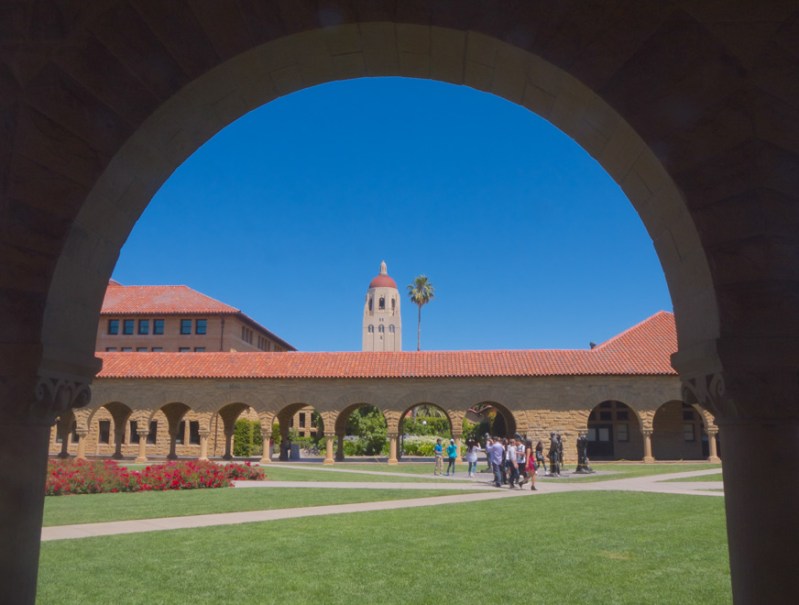Stanford has raised tuition for undergraduate students by 4.9% from the previous academic year, bringing the cost up to $55,473, despite students’ calls for lower tuition.
The Board of Trustees initially raised tuition in early December of last year, prior to the onset of the coronavirus pandemic in America.
Tuition for Stanford undergraduate students has been on the rise for the past few years: In the 2018-19 academic year, regular quarterly tuition for undergraduates equalled $16,901. This number increased to $17,619 for the 2019-20 academic year and was raised even higher for the upcoming year, reaching $18,491.
The pandemic-related financial strain on many students has also caused the University to anticipate a greater need, increasing endowment payout for financial aid as a result.
“Our endowment and other sources of revenue, which we use to supplement tuition to cover the cost of education, are now greatly challenged because of the pandemic crisis, but Stanford remains committed to providing financial assistance to students in need,” University spokesperson E.J. Miranda wrote in a statement to The Daily. “Anticipating a greater need for financial aid due to the national economic situation, trustees approved a 3% increase in payout from endowment funds that support student financial aid.”
This increased payout will be distributed among the “nearly 70 percent of Stanford undergraduates receiving some fort of financial aid,” according to Miranda, who also noted that “most families at Stanford do not pay the full tuition price.”
This increase in tuition is not the first change the University has made in the past year due to budgetary constraints.
In July the University announced 208 permanent staff layoffs, 30 furloughs, the elimination of approximately 450 open positions and the reduction of some full-time positions to part-time.
In a letter in May, President Marc Tessier-Lavigne predicted a $267 million “negative financial impact” by the end of the 2020 fiscal year, with more challenges to come in the next year.
“Many of our income streams will continue to be diminished,” Tessier-Lavigne wrote. “Housing revenue will be reduced due to fewer students living on campus; income-producing events and programs will continue to be limited; and clinical, research and philanthropic income streams will be challenged.”
Stanford’s peer institutions Harvard and MIT have announced that undergraduate tuition will not be discounted, even with classes online. Unlike Stanford, however, MIT has decided to keep tuition at the previous year’s rate, despite an earlier announcement about increased tuition. Princeton announced a 10% discount for undergraduate tuition.
Along with University administration and staff, many undergraduates are feeling the pressure of budgetary restrictions amid this pandemic.
In spring, Stanford students created a petition to lower tuition for the online quarter, which garnered more than 1,700 signatures.
“We totally understand [the decision to go remote] and would like to prevent the spreading of coronavirus,” the petition said. “But considering the impact online education will bring us, which is less interaction with faculty, incapability to hold meaningful discussions and attend research labs, and so on, we would like to start this petition to ask Stanford University to consider the possibility of deducting tuition.”
The increase in tuition has also prompted some students to take a gap year instead.
After learning about Stanford’s shift to off-campus learning, Riley Feng ’25 decided to take a gap year, as she felt that tuition wasn’t worth remote learning.
“When you pay Stanford tuition, it’s not just for your classes — you’re paying for face time with professors, networking opportunities on campus, and the creative learning environment that Stanford’s campus provides,” Feng said. “To me, learning online and paying full tuition while missing out on so many of those experiences, and a true freshman year, just wasn’t worth it when I had the option of a gap year.”
Feng hopes to spend her gap year interning, taking classes at local colleges and working towards a global trade finance certificate.
Despite the concerns of undergraduates like Feng, Stanford maintains that the cost of tuition still reflects the value of receiving a Stanford education.
“We believe the value of a Stanford education and degree, whether in-person or remote, continues to greatly exceed tuition,” Miranda said.
Contact Nina Iskandarsjach at ninaisk ‘at’ stanford.edu.
